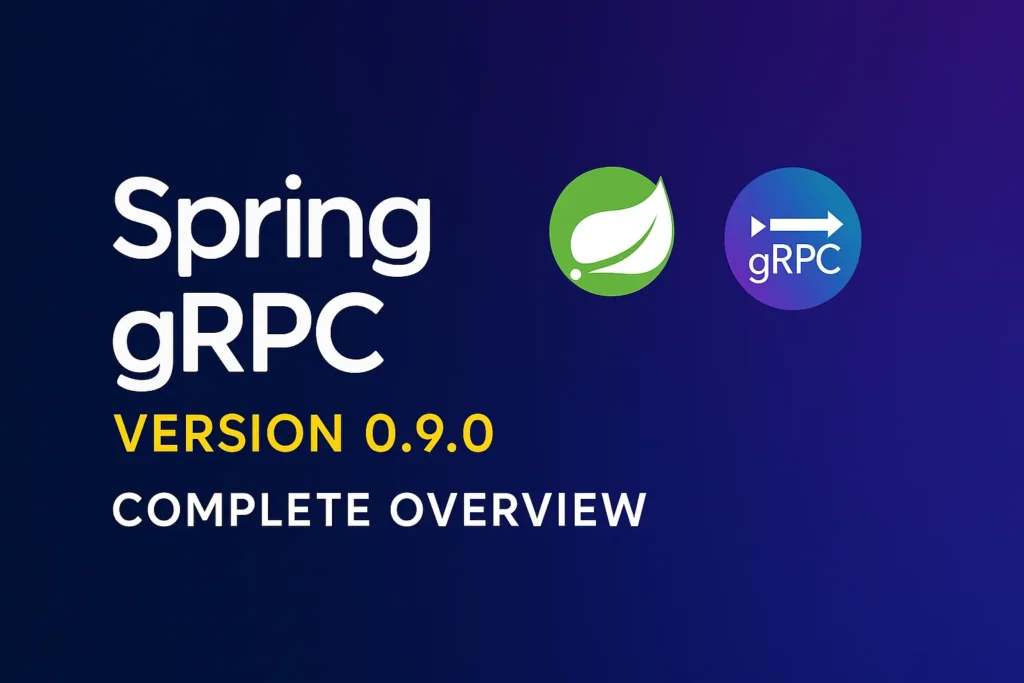Spring gRPC is a lightweight framework that allows seamless integration between gRPC services and the Spring Boot ecosystem. With the release of Spring gRPC version 0.9.0, new features and improvements have been introduced, making it easier for developers to work with remote procedure calls in Java applications.
This guide offers a complete breakdown of what’s new in version 0.9.0, how to use Spring gRPC effectively, and practical examples to help you implement microservices and APIs more efficiently.

What is Spring gRPC?
Spring gRPC is a Java-based framework built on top of gRPC and integrated with Spring Boot. It simplifies the creation of gRPC servers and clients using familiar Spring patterns like auto-configuration, dependency injection, and configuration properties.
Spring gRPC supports both synchronous and asynchronous communication and allows services to be written in a clean, modular way. It bridges the gap between gRPC protocol buffers and Spring Boot RESTful architecture.
What’s New in Spring gRPC 0.9.0
Spring gRPC version 0.9.0 brings key updates aimed at improving usability, performance, and developer experience:
- Improved Spring Boot 3+ Compatibility
- Enhanced Error Handling and Exception Mapping
- Better Interceptor Support for Logging and Tracing
- Simplified Server Configuration with YAML/Properties
- Support for Kotlin DSL and Java Records
These updates help developers write cleaner gRPC services while taking full advantage of Spring Boot’s flexibility.
Benefits of Using Spring gRPC
- Seamless integration with Spring Boot for dependency injection and configuration
- Strong typing and efficient performance of gRPC with the ease of Spring
- Built-in support for interceptors, load balancing, retries, and deadlines
- Protocol Buffers ensure cross-language communication
- Microservices-friendly, ideal for inter-service communication
Real-World Use Cases of Spring gRPC
Spring gRPC is widely used in:
- Microservices Architecture for internal service-to-service communication
- High-performance APIs where low latency and strong typing are critical
- Streaming services, e.g., chat or live data feeds
- Cross-platform communication in large, distributed systems
FAQs on Spring gRPC Version 0.9.0
Q1. Is Spring gRPC 0.9.0 compatible with Spring Boot 3?
Yes, version 0.9.0 supports Spring Boot 3 and improves startup behavior.
Q2. How is gRPC better than REST in Spring?
gRPC offers faster performance, binary data transmission, and built-in support for contract-first API design.
Q3. Can I use Spring gRPC with Kotlin?
Yes, the latest version supports Kotlin DSL and works well with Kotlin-based projects.
Q4. Is Spring gRPC open source?
Yes, it’s available on GitHub and supported by the community.
Q5. Does Spring gRPC support interceptors?
Absolutely. You can define global or per-service interceptors for logging, tracing, etc.
Q6. What is the best IDE for Spring gRPC development?
IntelliJ IDEA with the Protocol Buffers plugin is widely used.
Final Thoughts
Spring gRPC 0.9.0 takes the productivity of Spring Boot and combines it with the performance of gRPC. Whether you’re building microservices or internal APIs, this version offers more flexibility, better integrations, and easier configurations.
Stay updated with Thenewviews.com for the latest tech releases, guides, and developer tools for 2025!
